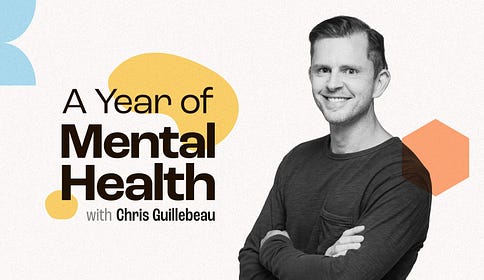I heard a story of a Canadian screenwriter who experienced a concussion. The recovery was slow, and extended into several years. Among other symptoms, she couldn’t concentrate and was hypersensitive to light. Everyone in her family had to keep the lights dimmed at home so she wouldn’t get serious headaches. Gradually she adjusted to a different sort of life—a much smaller one than she’d known before, and one filled with many unhappy compromises. Of course, she kept trying to get better, so she saw lots of different doctors in hopes of finding a helpful treatment. After being passed around from specialist to specialist, she finally ended up at a clinic in Pittsburgh. The doctor there was different—and even a little off-putting. Instead of being quiet and gentle, he was loud and abrupt. He told her that instead of doing everything she could to mitigate her symptoms, she should seek them out. Run towards the danger, he said. To someone who’d been hearing over and over about how she should rest and take it easy, this advice came as a shock. But what did she have to lose? Nothing else was working. As you might guess, the loud and abrupt doctor’s advice worked. Within six weeks, she was back to her pre-concussion way of life. Not just better. Totally cured.¹ Some survivors of autoimmune disorders tell similar stories. I’ve known several people who’ve been chronically ill, disappointed by the lack of effective treatments from most doctors, and who eventually find their way out by doing the opposite of what they’re told. Instead of accepting a life of limited function, they fight back and return to the world of the living. For me, my mind often goes to running, something I do every day. One of the things I’ve learned in recent years is that sometimes when you feel hurt, you’re not really hurt. Or maybe you are a little hurt, but it’s the kind of hurt you need to endure and push through. When you’re learning to run or lift weights, or presumably most other athletic pursuits, beginners typically stop at the onset of any pain. Or they go too far and injure themselves, hopefully in a minor way. But after they recover, they’re afraid to get hurt again, so they tend to be overly cautious. Eventually—at least, if you want to improve—you learn which types of pain should be respected, and which types can be ignored as you push through. Oh, and about the concussion story: the editors were careful to note that this approach (deliberately seeking out your symptoms instead of trying to manage them) isn’t appropriate for all such injuries. There are several subtypes of concussions, apparently, so you need to be cautious when trying out alternative treatments. The same is true for autoimmune disorders, continuing to exercise while you’re in pain, and so on. The rules don’t apply to every situation, and neither do the exceptions! Still, the general principle is: don’t hide from the danger; run towards it. 1 This is a true story! I heard a version of it recently on This American Life. It also looks like it was was told in more detail in a book, Run Towards the Danger. You’re currently a free subscriber to 🌻 A Year of Mental Health. For the full experience, consider upgrading! |
Monday, September 16, 2024
Run Towards the Danger
Subscribe to:
Post Comments (Atom)
⏰ Thank you! (more important Timingresearch info)
TimingResearch.com [AD] eBook: Amplify Your Options Trading with...

-
insidecroydon posted: " Become a Patron! What's on inside Croydon: Click here for the latest events listing...





No comments:
Post a Comment